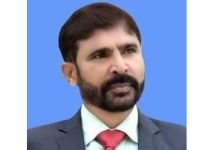by Muhammad Mohsin Iqbal
In the annals of political history, the phenomenon of leaders being forced to leave their countries due to public pressure and protest is not uncommon. This often occurs in response to widespread dissatisfaction with governance, economic turmoil, corruption scandals, or human rights abuses. Notable among these leaders is Sheikh Hasina Wajid of Bangladesh, who faced significant opposition at various points in her political career. However, she is not alone in this regard. A closer examination of global history reveals a number of Prime Ministers and Heads of State who have had to flee their countries due to the ire of their populace.
The cases of leaders fleeing their homelands are diverse and span across Continents. In Asia, for instance, Mohammad Najibullah of Afghanistan, who served as President during the Soviet occupation, was ousted in 1992. After the withdrawal of Soviet troops and the rise of the Mujahideen, Najibullah took refuge in a United Nations compound in Kabul, where he remained until 1996 when the Taliban captured the city and executed him. His downfall was precipitated by the collapse of the Soviet Union and the ensuing power vacuum, which his government could not withstand.
A prominent figure from the Middle East is the Shah of Iran, Mohammad Reza Pahlavi. He left Iran in January 16, 1979 amidst the Islamic Revolution spearheaded by Ayatollah Khomeini. His tenure was characterized by swift modernization and secularization, which estranged many in Iranian society, notably religious factions and conservatives. The economic inequality and oppressive tactics employed by his administration incited widespread demonstrations, leading to his departure. The Shah sought refuge in various countries, such as Egypt, Morocco, and the United States, but he never made it back to Iran, passing away in Egypt in 27 July 1980.
In Latin America, Anastasio Somoza Debayle, the Nicaraguan dictator, was forced to flee his country in 1979 following the Sandinista revolution. His family’s rule had been characterized by severe repression, corruption, and economic inequality. The Sandinista National Liberation Front, a leftist revolutionary group, garnered substantial support from the disillusioned populace and successfully overthrew Somoza. After his departure, he lived in exile in Miami, then The Bahamas, and finally Paraguay, where he was assassinated in exile in September 1980.
South America also witnessed the ousting of leaders like Juan Domingo Perón of Argentina. Although Perón initially fled the country in September 1955 after a coup d’état, he returned to power in 1973 only to die in office a year later. His initial exile was a result of increasing opposition from the military and various sectors of society disenchanted with his policies. Perón’s departure marked a significant period of instability and military rule in Argentina.
In Africa, Mobutu Sese Seko of Zaire, now the Democratic Republic of the Congo, was another leader who fled his country due to public pressure. Mobutu’s regime was notorious for corruption, human rights abuses, and economic mismanagement. His rule, which began in 1965, was supported by Western powers during the Cold War due to his staunch anti-communism stance. However, by the 1990s, the Cold War had ended, and internal dissent grew. Laurent-Désiré Kabila led a rebellion that eventually toppled Mobutu’s government in 1997, forcing him into exile in Morocco, where he died in 1997.
Closer to the 21st century, we have the example of Tunisian President Zine El Abidine Ben Ali, who fled Tunisia in 2011 amid the Jasmine Revolution, which sparked the wider Arab Spring. Ben Ali had ruled Tunisia for over two decades, during which his regime was marked by economic prosperity for some, but also by significant corruption, censorship, and human rights abuses. The self-immolation of Mohamed Bouazizi, a street vendor protesting police corruption and ill treatment, ignited widespread protests that led to Ben Ali’s departure. He fled to Saudi Arabia, where he lived until his death in 2019.
In Europe, we can consider the case of King Constantine II of Greece, who was forced into exile in 1967 following a military coup. Although he initially attempted to negotiate with the junta, his efforts failed, and he left the country. Constantine’s exile lasted for decades, and it wasn’t until 2013 that he was allowed to return to Greece, albeit without regaining any political power.
Another European example is Viktor Yanukovych of Ukraine, who fled to Russia in 2014 following the Euromaidan protests. Yanukovych’s decision to abandon an association agreement with the European Union in favor of closer ties with Russia sparked massive protests. The government’s violent crackdown on protesters only intensified the public outcry, leading to his eventual ousting and flight from the country. Yanukovych remains in Russia, and his presidency is often cited as a critical moment in Ukraine’s modern history, contributing to the ongoing conflict in the region.
The pattern of leaders fleeing their countries continues to this day, reflecting a global reality where public discontent can force significant political changes. These instances underscore the crucial role that public opinion and protest play in shaping political landscapes. They also highlight the vulnerability of even the most entrenched regimes to the collective power of their citizenry. In many cases, the departure of these leaders paved the way for significant political and social transformations, though not always for the better.
Sheikh Hasina Wajid’s experience adds another layer to this narrative. As the daughter of Sheikh Mujibur Rahman, the founding leader of Bangladesh, her political journey has been fraught with challenges. She has faced multiple assassination attempts, military coups, and widespread political opposition. While she has managed to remain in power through various crises, her tenure is emblematic of the turbulent nature of leadership in countries grappling with complex socio-political landscapes.
The stories of these leaders, from Asia to Africa, Europe to Latin America, serve as powerful reminders of the dynamic and often unpredictable nature of political power. They reflect the ongoing struggle for democratic governance, human rights, and social justice worldwide. While the exile of a leader often marks the end of an era, it also signals the potential for new beginnings and the resilience of the human spirit in the quest for a better future.

















